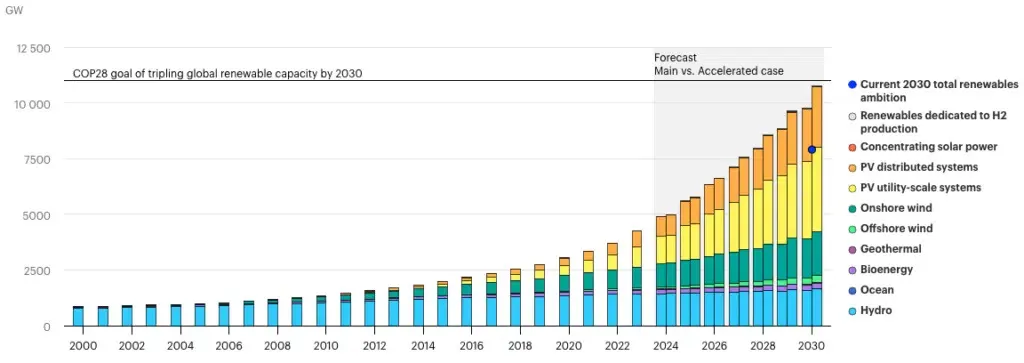Southeast Asia is undergoing a major transformation in its energy sector. Between 2010 and 2022, the region's renewable energy (RE) capacity tripled from 33 gigawatts (GW) to 102 GW, surpassing coal power for the first time. In 2021, RE accounted for 25% of the electricity mix, a notable increase from just a decade earlier. This shift signals growing momentum toward the adoption of Southeast Asia Renewable Energy, driven by both economic and environmental factors.
The region has vast untapped potential, particularly in solar and wind energy. Southeast Asia’s solar photovoltaic (PV) capacity could generate over 45,000 terawatt-hours (TWh) annually—far exceeding the region’s current total electricity generation of 1,158 TWh. Onshore wind resources are also significant, with an estimated potential of 1,400 GW, capable of producing more than 2,500 TWh per year. These figures highlight an enormous opportunity for Southeast Asian nations to harness sustainable energy sources to power their economies.

Read Also: High Potential of Renewable Energy in Southeast Asia Construction
The Economics of Southeast Asia Renewable Energy
One of the biggest barriers to the widespread adoption of renewable energy has been cost. However, as technology advances, the price of solar and wind energy has become increasingly competitive with fossil fuels. In Southeast Asia, the levelized cost of electricity (LCOE) for solar PV ranges between $70 and $95 per megawatt-hour (MWh), making it just as viable as coal, which costs between $80 and $120 per MWh, and natural gas turbines, which range from $80 to $125 per MWh. This cost reduction, combined with government incentives and international investments, is making clean energy a more attractive option for businesses and policymakers.
Governments across Southeast Asia are taking steps to accelerate this transition. Vietnam has emerged as a regional leader in solar power adoption, with an 11% solar penetration rate. This success is largely due to the country’s feed-in tariff (FiT) policy, introduced in 2017, which encouraged significant investment in renewable energy infrastructure. Other nations, including Thailand, Myanmar, and the Philippines, are also focusing on large-scale solar and wind energy projects, recognizing their long-term benefits for energy security and economic stability.
Countries Leading the Renewable Energy Transition
Several Southeast Asian countries have already made significant strides in renewable energy adoption. Cambodia, Laos, and Myanmar now generate over 50% of their electricity from renewable sources, primarily hydropower. Meanwhile, Vietnam and Thailand are ramping up their solar and wind energy production, making them key players in the region’s clean energy shift.
Investment in renewable energy has surged, reaching $10 billion annually by 2024. This growth has been driven by international commitments to decarbonization, as well as increasing concerns over energy security. With global attention shifting toward sustainable solutions, Southeast Asia has become an attractive market for renewable energy development.
Read Also: Green Building Certifications in Southeast Asia is The Standard
The Road Ahead of Southeast Asia Renewable Energy
Southeast Asia’s clean energy transition is at a critical juncture. The tripling of renewable energy capacity over the past decade demonstrates the region’s potential, but there is still much work to be done. While solar PV costs are now competitive with fossil fuels, further investment in infrastructure and policy reform is necessary to sustain this progress. Governments and businesses must work together to expand renewable energy projects, develop storage solutions, and modernize grid systems to support a clean energy future.
If Southeast Asia fully capitalizes on its renewable energy potential, it can reduce its reliance on fossil fuels, lower carbon emissions, and create a more resilient energy system. With strong policies, continued investment, and regional cooperation, the region is well-positioned to become a global leader in clean energy. The path forward is clear. Embracing Southeast Asia Renewable Energy is not just an environmental necessity but an economic opportunity that will shape the region’s future for generations to come.







